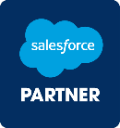The Best Outlook Task Sync Tool for Salesforce Users
Cirrus Insight offers reliable two-way syncing between Outlook and Salesforce, helping sales teams stay organized and el...
AI Sales Enablement [Use Cases & Best Platforms To Use]
Discover how AI in sales enablement is transforming B2B teams in 2026. Learn what AI sales enablement is, why it matters...
11 Best AI Sales Assistant Software for 2026: How to Pick, Deploy & Scale
Discover the best AI sales assistant software for 2026. Compare top-rated tools to automate CRM tasks, book meetings, an...
AI in Sales 2025: Stats, Trends & Generative AI Insights
Explore 2025's most comprehensive AI in Sales report. Real stats, use cases & trends in generative AI, CRM, and sales pr...
GrowthTech Summit: Modernizing Financial Advisory With AI & Automation
Explore how financial advisory firms can revolutionize their operations through AI and automation, enhancing efficiency ...
12 Best Sales Automation Tools for 2026: How to Use AI in Sales Automation
Explore the best sales automation tools for 2026. Compare top AI sales automation tools, learn how to evaluate sales aut...
12 Best AI Sales Agent Software for 2026: Comparison + Price
Discover the best AI sales agent software for 2026. Use top tools for sales team to boost sales easily.
10 Best AI Meeting Assistants for 2026: Top Software Tools & How to Choose
Discover the best AI meeting assistant software for 2026. Explore the top AI meeting assistants, learn how they boost pr...
Cirrus Insight and Bullhorn Partner to Redefine Relationship-Driven Selling with AI
Cirrus Insight announced its partnership with Bullhorn, bringing AI-powered automation and relationship intelligence dir...
How to do Salesforce to Google Sheets Integration [Top 4 Connectors]
Explore the best tools to connect Salesforce to Google Sheets. Compare 4 top connectors, see key benefits, and choose th...

.png?width=1268&height=1772&name=Sidebar-C%20(1).png)

![AI Sales Enablement [Use Cases & Best Platforms To Use]](https://www.cirrusinsight.com/hs-fs/hubfs/pexels-pixabay-158826.jpg?width=397&height=223&name=pexels-pixabay-158826.jpg)







![How to do Salesforce to Google Sheets Integration [Top 4 Connectors]](https://www.cirrusinsight.com/hs-fs/hubfs/pexels-divinetechygirl-1181244.jpg?width=397&height=223&name=pexels-divinetechygirl-1181244.jpg)
